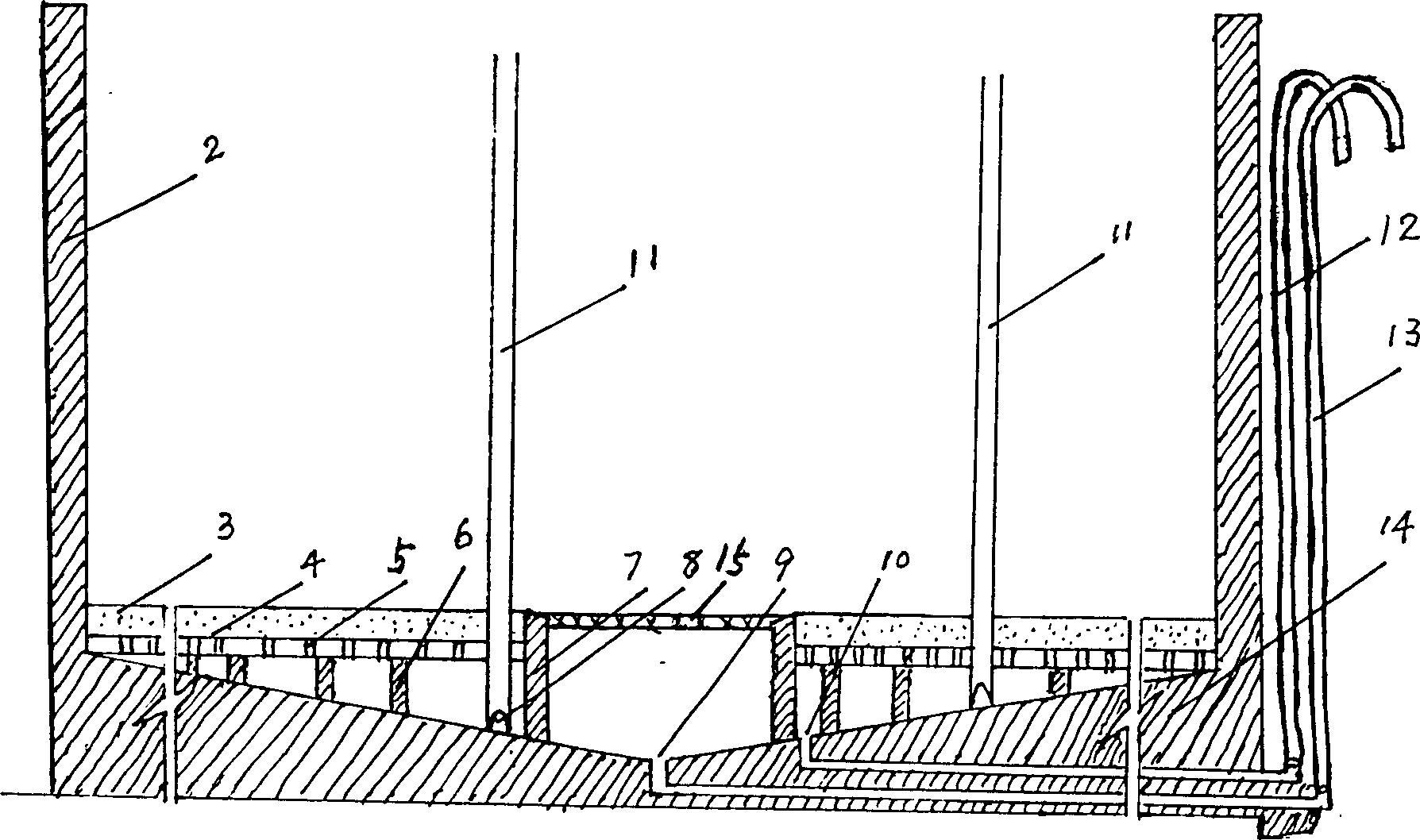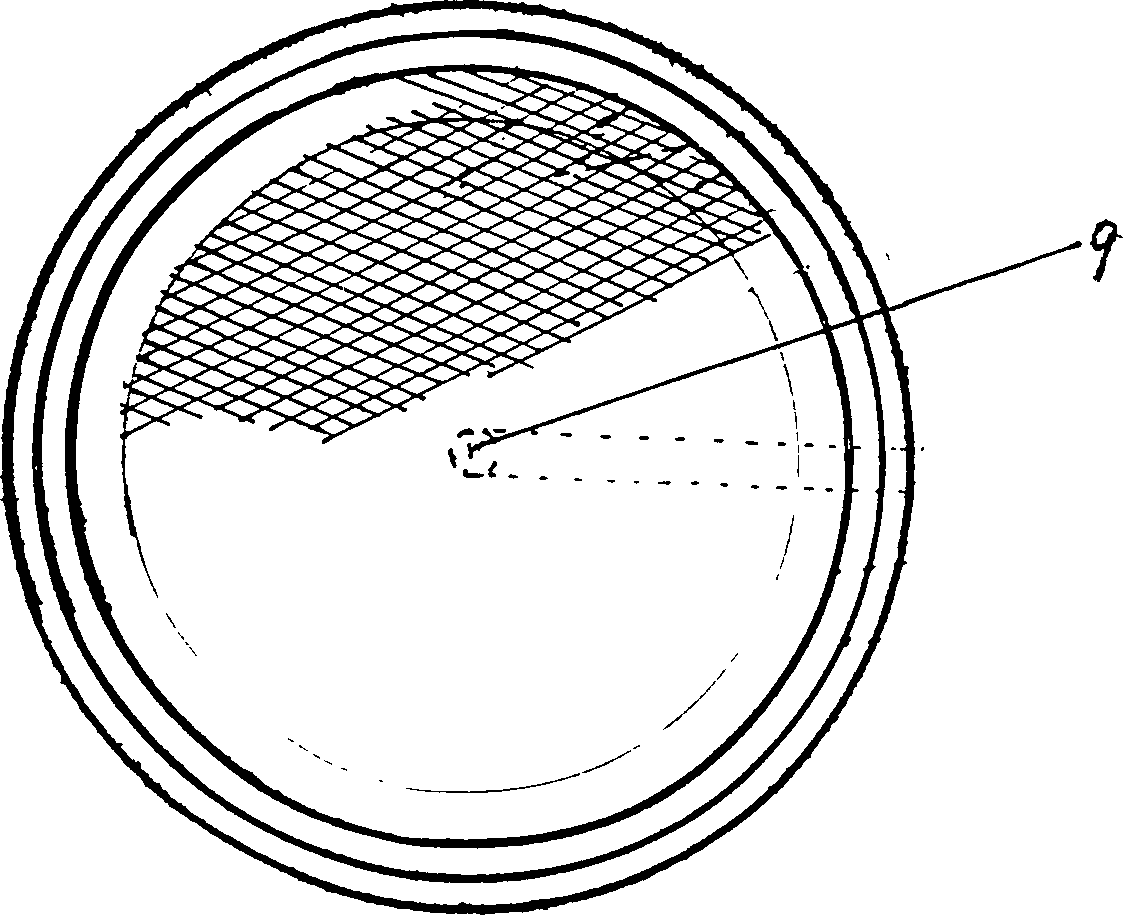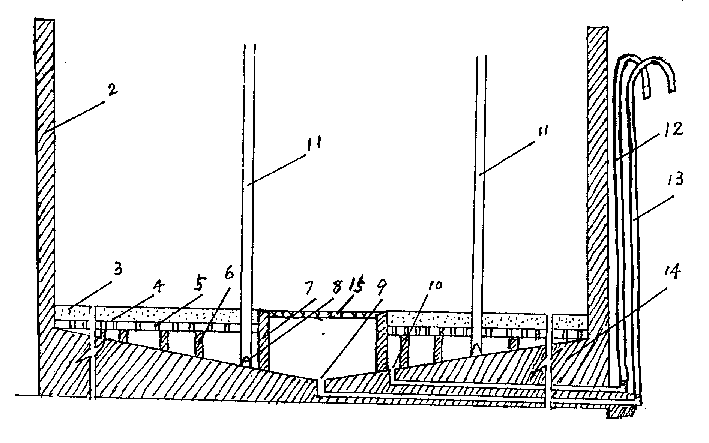High-yield breeding method and breeding pond for Japanese prawn
A breeding method and technology of breeding ponds, applied in the field of aquaculture, can solve the problems of blackened sand, rotten and smelly dirt, and inability for shrimps to inhabit
- Summary
- Abstract
- Description
- Claims
- Application Information
AI Technical Summary
Problems solved by technology
Method used
Image
Examples
Embodiment Construction
[0036] Take two 100 meters each 2 The second-layer bottom of the Penaeus japonicus submerged sand culture pond is an example. The pool is square, the depth of the pool is 2.3 meters above the sand, and it is half underground. A gas riser pipe 11 is established in the No. 2 pool, and a cement slab not covered with sand is established around the gas riser pipe 11 . 3 layers of shrimp leak-proof nets 15 and sewage well 7 are set in No. 1 pond, and the internal diameter of sewage well 7 is 1 meter. On July 29, after spreading sand in each pond, add 1 meter deep water, 50 centimeters of water depth on the sand, apply 12 kilograms of bleached powder crystals (concentration 120PPM) to disinfect the pond water and the sand layer in each pond. After spraying, use the water-changing drain hose 12 to discharge the non-sterilized water under the sand layer, so that the upper disinfected water is reduced to close to the sand plane, so that the lower space is full of disinfected water, so...
PUM
 Login to View More
Login to View More Abstract
Description
Claims
Application Information
 Login to View More
Login to View More - R&D
- Intellectual Property
- Life Sciences
- Materials
- Tech Scout
- Unparalleled Data Quality
- Higher Quality Content
- 60% Fewer Hallucinations
Browse by: Latest US Patents, China's latest patents, Technical Efficacy Thesaurus, Application Domain, Technology Topic, Popular Technical Reports.
© 2025 PatSnap. All rights reserved.Legal|Privacy policy|Modern Slavery Act Transparency Statement|Sitemap|About US| Contact US: help@patsnap.com



